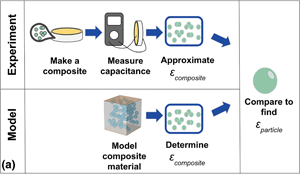Crossref Citations
This article has been cited by the following publications. This list is generated based on data provided by
Crossref.
Ferro, Gio
Ganjam, Dithi
Gibson, Maia
Partington, Katie
Trikha, Akshay
Wu, Mandy
Domrzalski, Jessica
Dato, Albert
and
Monson, Todd
2021.
Investigating the dielectric properties of barium titanate nanocomposites using transmission electron microscopy image processing.
MRS Advances,
Vol. 6,
Issue. 25,
p.
631.
Sejati, Prima Asmara
Saito, Noritaka
Prayitno, Yosephus Ardean Kurnianto
Tanaka, Koji
Darma, Panji Nursetia
Arisato, Miku
Nakashima, Kunihiko
and
Takei, Masahiro
2022.
On-Line Multi-Frequency Electrical Resistance Tomography (mfERT) Device for Crystalline Phase Imaging in High-Temperature Molten Oxide.
Sensors,
Vol. 22,
Issue. 3,
p.
1025.
Cooper, Emma
De Anda, Eduardo
Flitz, Evan
Kim, Halie
Casañas, Nicholas
Johnson, Lillian
Kedzierski, Zoe
Domrzalski, Jessica
Dato, Albert
and
Monson, Todd
2022.
Investigating the dielectric constant of barium titanate in a polymer-matrix nanocomposite.
MRS Advances,
Vol. 7,
Issue. 31,
p.
799.
CHOI, Yoorina
HWANG, Yun-Chan
YU, Mi-Kyung
LEE, Kwang-Won
and
MIN, Kyung-San
2023.
Effects of barium titanate on the dielectric constant, radiopacity, and biological properties of tricalcium silicate-based bioceramics.
Dental Materials Journal,
Vol. 42,
Issue. 1,
p.
55.
Marvin, Jessica
Nicholson, James
Turek, Cedar
Iwasa, Erina
Pangrekar, Nilay
Fowler, Whitney C.
Van Ginhoven, Renee
and
Monson, Todd C.
2023.
Analyzing barium titanate TiO2 surface interactions with tert-butylphosphonic acid using density functional theory.
MRS Communications,
Vol. 13,
Issue. 6,
p.
1209.
Pritchard, Avery
Fuentes, Heather
Santosa, Jessica
Gonzalez, Madison
Garan, Josiah
Bartling, Vanessa
Nelson, Katrina
Dato, Albert
Monson, Todd
and
Van Ginhoven, Renee
2024.
Understanding surfaces and interfaces in nanocomposites of silicone and barium titanate through experiments and modeling.
MRS Communications,
Vol. 14,
Issue. 6,
p.
1319.
Iverson, Ethan T.
Legendre, Hudson
Killgore, Jason P.
Grunlan, Jaime C.
and
Kolibaba, Thomas J.
2024.
Remarkable Dielectric Breakdown Strength of Printable Polyelectrolyte Photopolymer Complexes.
ACS Macro Letters,
Vol. 13,
Issue. 10,
p.
1325.
